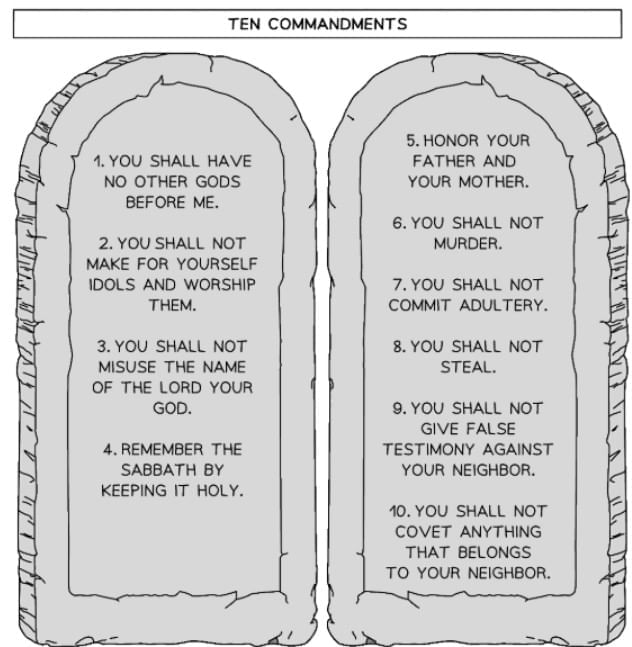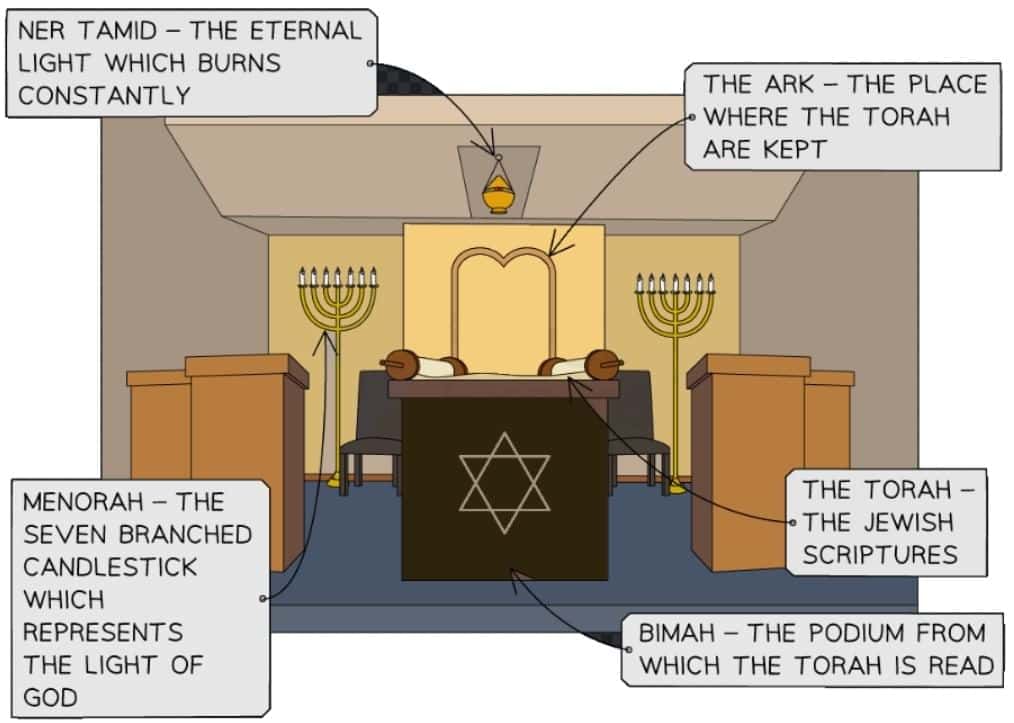The Synagogue | Religion, Philosophy & Ethics for GCSE/IGCSE - Year 11 PDF Download
The Mitzvot
Within Judaism, mitzvot are categorized as "positive" and "negative" commandments:
- Positive Mitzvot (Mitzvot Aseh): 248 rules outlining what Jews should do.
- Negative Mitzvot (Mitzvot Ta’aseh): 365 rules specifying what Jews should not do.
Mitzvot can also be classified by their purpose.
Mitzvot Between God and Man
Ritual mitzvot guide Jews on actions to avoid offending God, covering worship and festivals. They establish a personal covenant between a Jew and God.
Key Ritual Mitzvot
The first four of the Ten Commandments are the most significant ritual mitzvot:
- Do not worship images.
- Do not worship false gods.
- Do not misuse God's name.
- Dedicate the Sabbath to honoring God.
These commandments help Jews strengthen their relationship with God.
Mitzvot Between Man and Man
Moral mitzvot outline how Jews should interact with others:
- Loving God and loving one’s neighbor are inseparable.
- Positive relationships with others please God.
- These mitzvot enable Jews to live as a community in a way acceptable to God.
The Ten Commandments serve as the foundation for moral behavior. Some laws, called mishpatim, are divine judgments, such as "you shall not steal." These cover:
- Resolving disputes.
- Treatment of workers.
- Dietary laws for Jewish people.


The Importance of the Mitzvot
Jews follow the mitzvot because:
- God commanded them to do so.
- The laws are considered a divine gift.
- Observing mitzvot strengthens their relationship with God.
- Following commandments expresses gratitude for God’s deeds.
The Synagogue
The term "synagogue" means "bringing together" or "assembly." It serves as a place for worship and education about the Jewish faith. Synagogues often feature a Star of David and a Menorah on their exterior. The prayer hall, typically rectangular with seats on three sides facing inward, is where main prayers occur.
The Importance of the Synagogue
Synagogues are central to Jewish worship and community life:
- Jews believe communal prayer is ideal, requiring a minyan (minimum of ten people) for certain prayers.
- Synagogues host community meetings, social events, charity activities, and youth programs like clubs.
- They are educational centers where Hebrew classes are offered.
Design and Religious Features of the Synagogue

All synagogues, whether Orthodox or Reform, share specific features:
- Ner Tamid: A perpetual light above the Aron Hakodesh, symbolizing the scriptural command:
“And thou shalt command the children of Israel, that they bring thee pure oil olive beaten for the light, to cause the lamp to burn always.”
- Aron Hakodesh: A large cupboard facing Jerusalem, the holiest part of the synagogue, which:
- Houses the Torah.
- Symbolizes the ark that held the tablets given to Moses.
- Sefer Torah: A handwritten Torah scroll kept in the Aron Hakodesh, covered with an ornate mantle.
- Yad: A pointer (meaning "hand" in Hebrew) used by the reader to track their place during Torah readings, especially during prayers or holy days like Sukkot.
- Bimah: A raised platform with a reading desk, where the Sefer Torah is read, symbolizing the altar in the Temple.
Synagogues avoid images of God or people, adhering to the second commandment:
“Do not represent [such] gods by any carved statue or picture of anything in the heaven above, on the earth below, or in the water below the land. Do not bow down to [such gods] or worship them. I am God your Lord, a God who demands exclusive worship” (Exodus 20:4–5).
|
172 docs|3 tests
|
FAQs on The Synagogue - Religion, Philosophy & Ethics for GCSE/IGCSE - Year 11
| 1. What are the different categories of Mitzvot in Judaism? |  |
| 2. Why are Mitzvot considered important in Jewish life? |  |
| 3. What role does the synagogue play in Jewish worship and community life? |  |
| 4. What are some key design and religious features of a synagogue? |  |
| 5. How does the synagogue contribute to the observance of the Jewish calendar? |  |




















